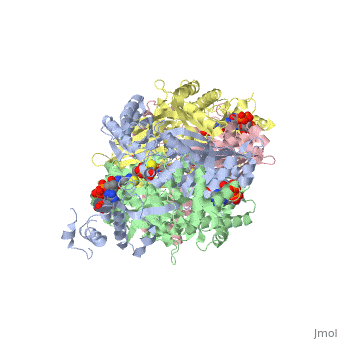SB2013 L08gr01
From Proteopedia
Sharugash Swargaloganathan (Talk | contribs)
(New page: == '''Significance of OspC in Lyme Disease''' == Lyme disease is a progressive multisystem disorder that produces a primary infection (erythema migrans), at an early stage, at the site of ...)
Next diff →
Revision as of 02:39, 8 May 2013
Significance of OspC in Lyme Disease
Lyme disease is a progressive multisystem disorder that produces a primary infection (erythema migrans), at an early stage, at the site of bite by Ixodes tick carrying spirochetes (Borrelia burgdoferi) and may spread to secondary sites (e.g. heart, nervous system, joints), if left untreated. Outer Surface Proteins (e.g. OspA, OspB and OspC) play a vital role in this infection process. While inside the vector, presence of OspA is prominent while OspC is unexpressed on the spirochete outer membrane. When spirochete invades the host body, OspA is suppressed and an upregulation of OspC occurs due to an induction in OspC synthesis (the surface proteins are co-regulated on the mRNA level). This upregulation of OspC occurs partially due to differential temperature change (the optimal temperature being 32-37 degree Celsius) in the host body. However, OspC expression decreases after two days (time needed for spirochete transmission) of feeding. This implies that OspC is a vital protein supporting the transmission of the antigen in the host body (Kumaran et al. 2011). Furthermore, the tick-borne infection was shown to be prevented upon addressing active (Gilmore et al. 1996) or passive (Mbow et al. 1999) immunization with various OspC formulation in experimental mammals. As a result, OspC is th eprotein of interest that is to be studied.
| |||||||||||
Proteopedia Page Contributors and Editors (what is this?)
Sharugash Swargaloganathan, Yevgeniy Luts, Mohammad Tariq Al Fazal

